A time-travelling, galaxy-defending archaeologist
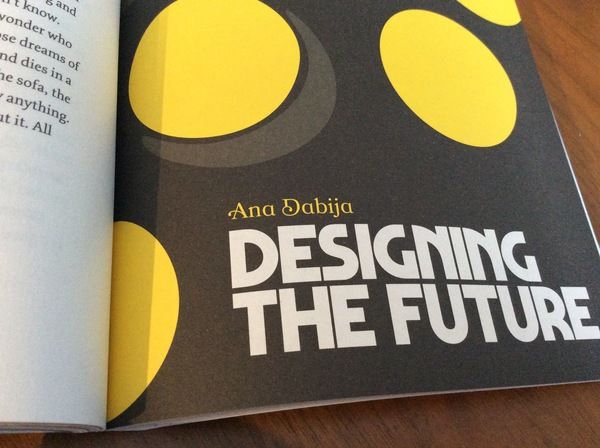
The scent of the future is wafting in. I’ve been breathing it in, choking on it, attempting assimilation.
Over the last few weeks, I’ve enrolled in a business startup program, went to a workshop about speculative design, and thought about where I’ll be in 10 years. But after seeing The LEGO Movie 2, I hope it’s not being a raptor-training archaeologist from space. (I guess you had to be there.)
After taking an extended break from social design work “to get some perspective” (ahem), I find that Everything Now Looks Very Strange Indeed™. This is another one of my updates on restarting a creative practice, with added cultural and design commentary.
(If someone’s forwarded this thing to you in the hope you’ll find it interesting, you can subscribe here to secure my everlasting love. And please, pass it on if you think it might be of interest to anyone.)
“Where do you see yourself in 10 years?”
In Issue #2 I mentioned that I’m starting a small strategic design practice called Studio Thing. To help this along, I recently applied for the Australian Government’s New Enterprise Incentive Scheme and am now enjoying free business training for several months, and ongoing business mentoring for a year. I’m usually sceptical of such government programs, but happy to report that our trainer Jason is hilarious, and that my cohort is vibrant and diverse. It includes one of Australia’s leading forensic investigators, an aerospace startup that’s designing hyper-spectral imaging satellites in a suburban Sydney home, and three mental health-related startups.
As you’d expect, the assessable part of the training feels a bit superfluous. The value is instead in the solidarity, support and collective wisdom you get in the room. In this context, formerly snooze-worthy operational details about business become far more alive. Frank feedback still rules, but deviates from the tech-bro/shark-tank consensus; for example, after an exuberant elevator pitch last week by one of the mental health startup founders, the most devastating feedback came from one of the quietest voices in the room, a softly spoken Korean couture designer who lacks confidence in her English:
“You felt like a wall,” she said. “If you want me to come to you for help, I need to see you bend.”
Uncommon wisdom.
No/future
Being in microbusiness school involves a lot of talk about strategy, and one of the contradictions of thinking strategically is that just as we need foresight in order to endure, we must also embrace uncertainty to thrive. We need a supple sensibility to survive our times. In this, I’m sympathetic to both the apocalyptic nowness of the punk phrase “no future” (which is much more than nihilistic rage) and the science-fictional tendency to imagine the future.

“No future” is one of the most important messages in punk. In a way, contemplating that “there is no future” opens up a new politics, a much more prefigurative politics. It’s no longer a question of waiting and dreaming of utopias, but of doing what we need to do here and now, and in the ways we can and want to. We’re not waiting for further instructions or permissions to get started. We will take ownership of music and spaces. In punk, anyone can pick up a guitar while someone else starts singing, speaking, doing.
— Guiomar Rovira, “No Future: From Punk to Zapatismo and Connected Multitudes”
Urgent and dangerous, disavowing the future forces a sense of possibility to arrive in the vacant spaces of the present. A very different strategy from, say, Star Trek’s optimistic and intricate future history of the 23rd and 24th Centuries.
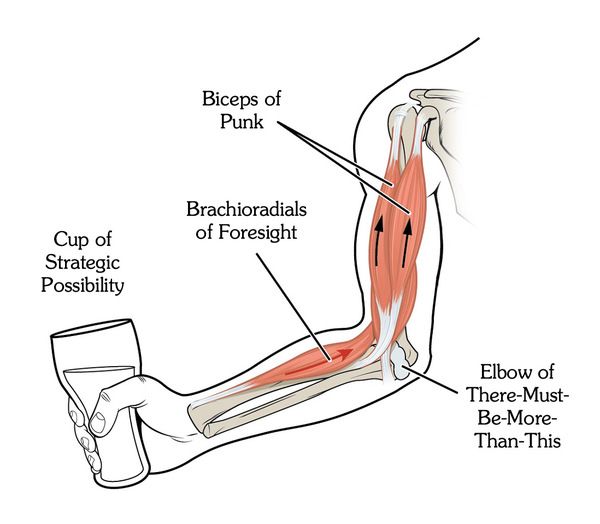
How I ridiculously imagine punk and speculative futures working together
But despite being an art of extrapolation, science fiction has often been a metaphor for the concerns of the present, or an opening of possibility, rather than simply a literal attempt to predict the future. And its speculations are often untamed and unruly. “Future” and “no future” are thus closer than we might initially suspect. With both turning on the same hinge (of “there must be something more than this”), I’d like to think that together they can contribute a kind of lubricated friction… towards greatness.
Visions
As it happens, the first edition of Visions, a handsome new science fiction magazine, just landed on my desk as I finished typing the previous sentence. It came with a sexy postcard:
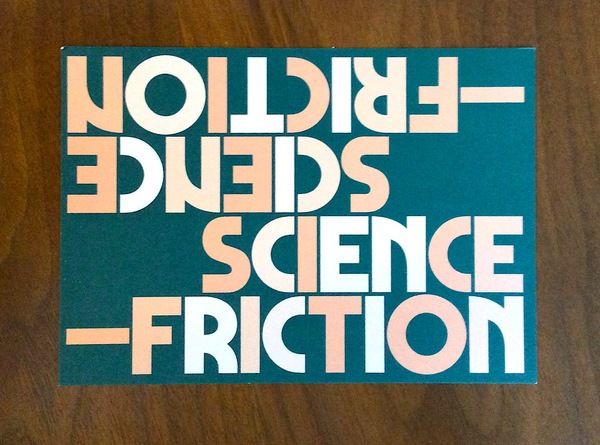
Uncanny! Visions is “a science fiction magazine where writers, designers and researchers of the past and present come together to explore the future.”

To be totally honest, I really ordered it to experience Marvin Visions, the awesome retrofuturistic typeface that editor Mathieu Triay cut specially for the magazine, but the whole package is obviously compelling and relevant to my Impossible Thing concerns. Back in the early ’80s, the magnificent Omni magazine mixed fiction and non-fiction about science and technology in a way whose promise has yet to be truly fulfilled, and Visions is a good step in that direction. More later.
Dying stars and fossil fuel archaeology
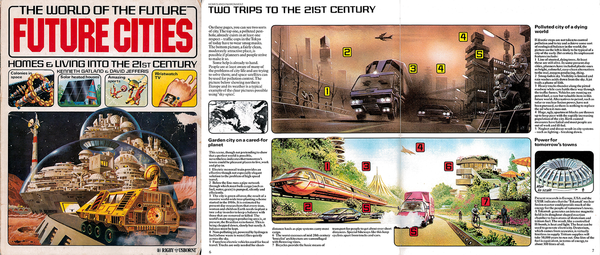
When I recently taught a second grade school art class with a theme of “the future”, I primed them with a range of stimuli: a familiar adage, “The best way to predict the future is to invent it” (attributed to everyone from Alan Kay to Abraham Lincoln); a peek at Future Cities, the book my father gave me when I was six years old and which directly inspired the work I now do; plus, many examples of how science fiction has directly inspired contemporary technologies.
I then invited each student to visit the future, travelling to a date of their own choosing. We set our future destinations using the control panel from Back to the Future’s DeLorean, and to the wheezing sound of the TARDIS time rotor (yes), we entered the time vortex.
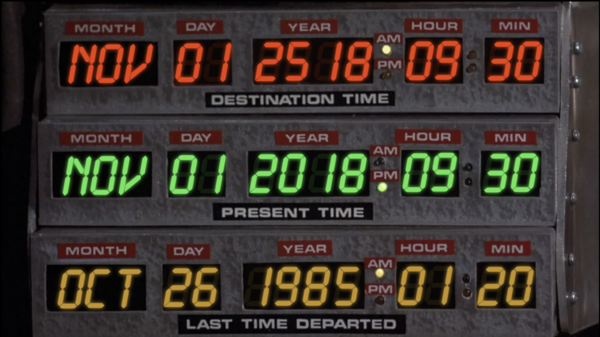
Our challenge: to draw what we saw on our arrival. A group of 7-year-old girls who were usually into drawing unicorns and rainbows surprised me by collaborating on an awe-inspiring scenario, set millions of years in our future: the sun becomes a red giant, swallows the Earth and ends human civilisation. But in a hopeful coda, the solar system’s habitable zone shifts to the orbit of Pluto. (Yes, they went into this much detail.)
Some kids imagined a range of consumerist wish-fulfilment utopias, full of crazy gadgets, but an interesting thing happened: debate spontaneously broke out about how desirable some of these really were. Calvin, the shortest kid in the class, sat grumpily at the back of the class and delivered a running commentary on the ecological impact of each scenario. “Where’s the energy coming from? Fossil fuels,” he’d snipe. “More fossil fuels.” And… “FOSSIL FUELS!!! WHAT ARE YOU THINKING???” It led to some interesting discussion. (Later that week, I overheard a child from this class ask, “Mummy, what are ‘fossil fuels’?” Which. Is. The. Best.)
There was a future in which everybody lived forever. “What do you think would happen if this came true?” I asked the class. “That’s scary,” my daughter’s friend Reyna replied, “because if everyone lived forever, it would reduce the capacity of the Earth to nothing.” (Her exact words.) The mind. It boggles.
“Fossil-Fuel” Calvin’s future scenario was a barren, charred wasteland.
Design as a race to dystopia
During the Sydney Design Festival, I had the fortune to attend a Speculative Design workshop run by the indefatigable Tina Fung of Meld Studios. Besides using the same Alan Kay/Abe Lincoln quote (snap!), Tina introduced us to Situation Lab’s game, The Thing From the Future, in which players visualise objects inspired by random cards that suggest its different aspects: its future timeframe (“Arc”), area of society (“Terrain”), general form (“Object”) and emotional charge (“Mood”).
Our group drew these cards:

The concepts people build around such provocations are usually passing exercises in extrapolation, but to teach us critical foresight, Tina got us to take our ideas a little more seriously, running them through a matrix of potential economic, technological, social and ecological consequences. Things got unnerving.
After my experience with the time-travelling children, I wasn’t surprised that most of us created dystopian scenarios. One group created a food-based social credit system within the last outpost of human civilisation — a space station in orbit above a dead world. While those displaying “optimal” behaviour could eat well, those relegated to the bottom of the system could only eat “Hungry Bread”, which left you feeling more hungry. The perversity generated much, uh, food for discussion.
To relieve human pressure on a future Earth, my team created an authoritarian eugenics program for interstellar colonisation. Those deemed genetically fittest for colonial adventures would be endlessly cloned to form the future interstellar population. Like the Hungry Bread, it was obviously perverse, but more disturbing was that one outspoken designer on our team actually relished the hyper-instrumentalism of this scenario. In the name of human survival, extreme measures could somehow be justified.
Beyond the obvious point that eugenics runs counter to a just society, I suggested that it also disregarded the distinct possibility that societies require diversity and its attendant challenges of cosmopolitanism in order to actually function. Without an ethic of inclusion, a society of Alphas might easily self-destruct in an orgy of atomised cocksureness. He snorted in reply.
“Inclusive design is bullshit,” he bellowed, “because design is exclusive, by its very definition! Tailoring our products to exactly fit the needs of an ideal customer is design excellence.” In his vehemence, his face began to flush. “Allowing rubbish common denominators to dilute excellence isn’t just bad design, it isn’t design.”
I’ll consider the possibility that this guy was trying to get a rise out of me, but remember when I recently expressed my misgivings about how contemporary design’s largely uncritical enthusiasm for highly tailored experiences might align too neatly with the way capitalism feeds social divisions? This guy was a living embodiment of everything I see going wrong with my profession. And yet he was factually correct, in a manner of speaking: in its ultimate distillation, design seeks to optimally shape the world to specific ends, and taken to its logical conclusion, we might end up with our nightmarish Things From the Future.
By throwing spanners into its heart, I want to dedicate my efforts to prevent this future design apocalypse.
This edition was brought to you by Go Home Productions’ classic Sex Pistols/Madonna, mashup, “Ray of Gob”. Watch and listen here.
A sustainable portion of all my love,
Ben
